Waqf, the Litmus Test in Bihar

IF he had his way, then former Bihar Chief Minister Lalu Prasad’s son Tejashwi Yadav would throw the Waqf (Amendment) Act in the dustbin. The young Rashtriya Janata Dal (RJD) leader said this is exactly what his party would do if voted to power in the Bihar Assembly election due by the end of this year. He also accused the ruling BJP at the Centre of using the amendment to “divide the country”.
This prompted Union minister Giriraj Singh of the BJP to accuse him of “going the Bengal way”—a reference to the TMC's refusal to implement the amended law in the neighbouring state, as well as a more veiled one to the widely reported violence during the Waqf protests in Murshidabad.
Clearly, the controversial amendment in the law concerning the legal status and management of property handed over by Muslims to God, according to the faith, for use in charitable purposes is set to face a laboratory test of sorts in the run-up to the Assembly polls, significantly influencing how the battlelines are drawn and the relations among the various parties, and with their bases of social support.
With over 400 of the 3,000-odd properties in Bihar registered under the Sunni and Shia Waqf Boards already in various stages of legal battles at the Waqf Tribunal and the Patna High Court, it is indeed a sensitive issue for the Muslims, who comprise 18 per cent of Bihar's population. After the backward castes (63 per cent) and the Dalits (19.5 per cent), they are the third-largest population group in the state. Among the Muslims, 73 per cent are Pasmanda, i.e. relatively backward. Though the Centre has been claiming that the amended law is especially in the interest of this section, it has not stopped many Muslim organisations from protesting against what they see as a threat to the collective interest of the community.
هذه القصة مأخوذة من طبعة May 01, 2025 من Outlook.
ابدأ النسخة التجريبية المجانية من Magzter GOLD لمدة 7 أيام للوصول إلى آلاف القصص المتميزة المنسقة وأكثر من 9,500 مجلة وصحيفة.
بالفعل مشترك ? تسجيل الدخول
هذه القصة مأخوذة من طبعة May 01, 2025 من Outlook.
ابدأ النسخة التجريبية المجانية من Magzter GOLD لمدة 7 أيام للوصول إلى آلاف القصص المتميزة المنسقة وأكثر من 9,500 مجلة وصحيفة.
بالفعل مشترك? تسجيل الدخول
The Art of Leaving
Saying goodbye to the public arena is no easy call to make
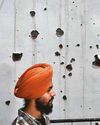
Mortar Memory
Along the quiet stretches near the border and the Line of Control in Jammu, a fragile calm once held sway, until the sudden thunder of heavy mortar shells since May 7 shattered it

Borders on the Boil
Whether it is Pakistan, China, Bangladesh or Myanmar, the unfinished business of history haunts the region every day
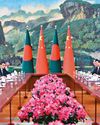
Neighbourhood 'Frisk' Policy
India needs to relook at Bangladesh as it partners with China to rebuild World War II air bases
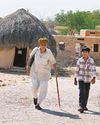
Fields of Nowhere
MYAJLAR is one of the last towns on the Jaisalmer border, which, at 464 km, is one of the longest that India shares with Pakistan.
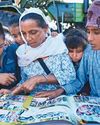
Brittle, Bitter Borders
In the marshlands of the Rann of Kutch, where the border is invisible yet hotly contested, belongingness becomes tentative
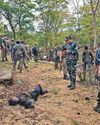
Red Fade
Since the regime change, something has been changing in Chhattisgarh. With top Maoist leaders killed, the remaining are insisting on a ceasefire or peace talks. The state must make the most of the situation
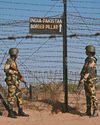
Sir Creek and Adam's Bridge
With the recent military standoff between India and Pakistan following the Pahalgam terror attack on April 22 that claimed the lives of 26 people, the Indo-Pak border region with its long history of tensions is once again in the limelight.
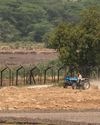
Lines Drawn in Blood
In villages caught between two nations, memory and fear shape everyday life. The land is under floodlights, children are sent away in silence, and home is a place one must keep returning to
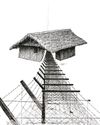
Maps and Minds
Maps have divided transnational ethnic groups Nagas, Zos, Bhutias, Bengalis and Nepalis, among others, but the Naga or the Zo mind does not accept the boundaries on government maps
